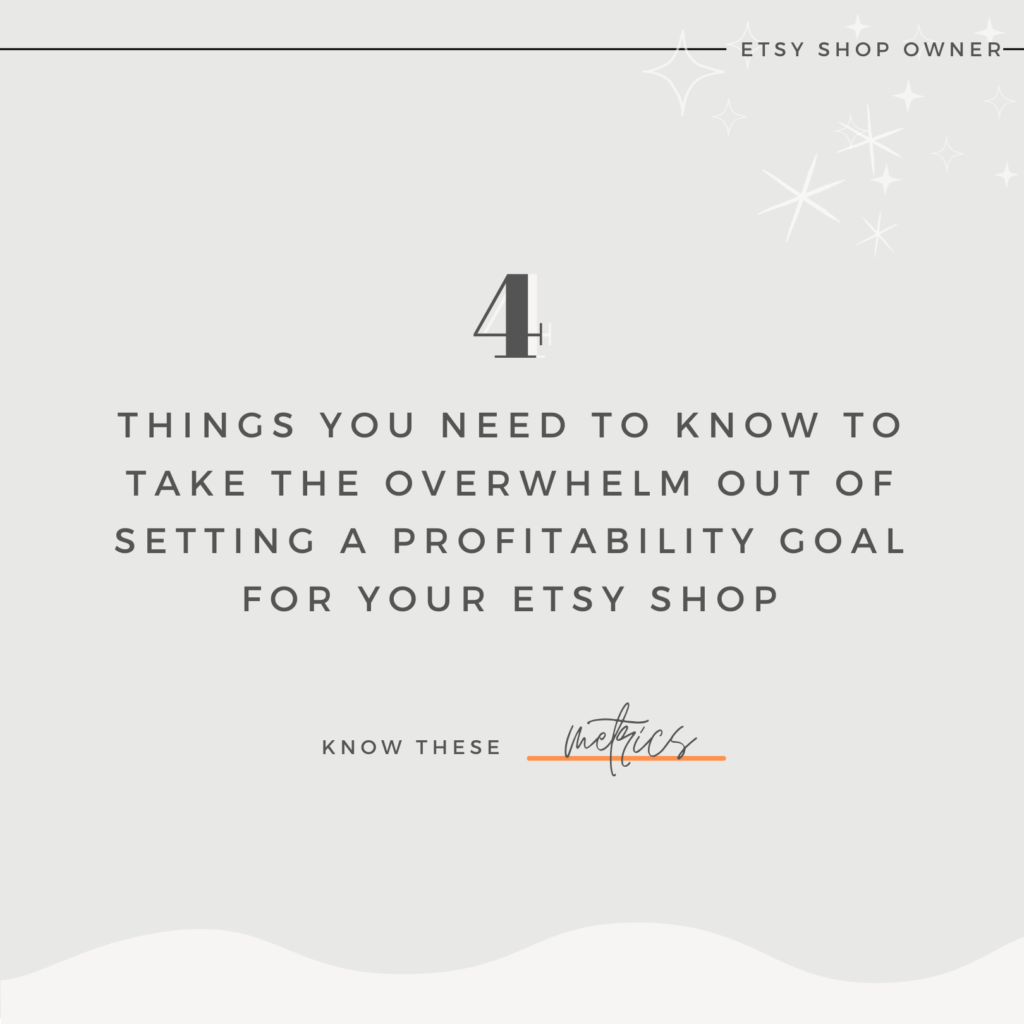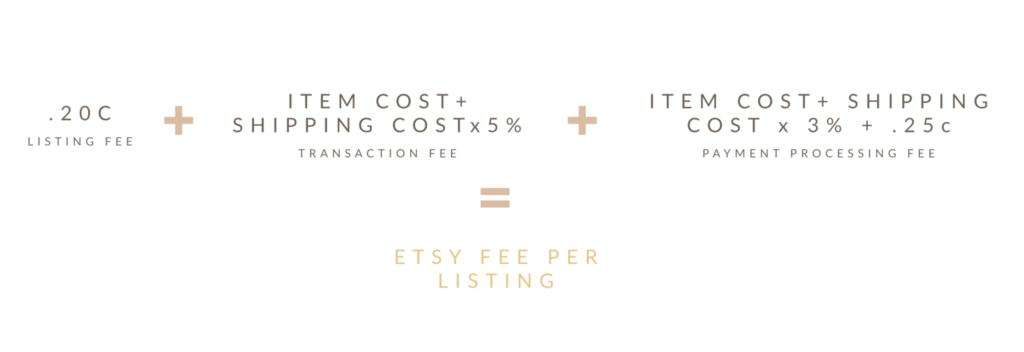THE LK BLOG
Welcome to
THE LK BLOG
Welcome to
When selling on Etsy you are likely leaning into a passion of yours. Perhaps the making of your craft comes easily to you, it’s the business part that you haven’t quite mastered. You are not alone! Most sellers on Etsy long for the creative process but shy away from the business component of running an Etsy shop. One of the main objectives of an Etsy shop is to become profitable. Whether you want to pay for the work you do and break even or you want to quit your day job and generate vast amounts of income. It all depends upon making a profit on Etsy, and the ability to scale. Some Etsy shops have figured this out relatively quickly, and others it’s taken decades to master the business component of their Etsy shop.
The #1 way to know your profitability is simply to get started. Not being overwhelmed by the unknown and the fear that you are not as profitable as you hope. Once you start looking at your profitability the numbers become power, you’ll build confidence and profit and be so glad you fought the fear of getting started. Here are the four things you need to know in order to set a goal that’s focused on profitability.

Understanding what Etsy charges you per item is the first step. There are three main fees: the listing fee, the transaction fee, and the payment processing fee. This is taking into consideration that you don’t pay for the additional subscription fee for Etsy Plus and aren’t paying for ads, and don’t make a sale that includes Etsy off-site ads. This is at the simplest form what you can expect to pay in Etsy Fees:

Let’s Break it down:
Example:
Let’s say you sell an item for $20 and charge $5 for shipping.
Now give it a try, plug in your Item’s cost, and calculate your own total fees. Make sure you use this when you are taking into consideration the total cost of your product, this will help you land on your pricing.
If you want to dig into Etsy fees more deeply, check out this entire blog post, here, dedicated to Etsy fees, you can see what the fees are on other marketplaces like Amazon as well.
Have you taken the time to add up the costs to produce your item? Start small so this isn’t an overwhelming task. You’ll want to write down the cost of everything it takes to make your item. I like to do this at an individual product level. We won’t be taking into consideration things that it does take to run the business like the cost of the building, just yet. Let’s keep it simple and build up to the business level.
These are the costs that you should take into consideration when looking at the product level:
Total Cost of Item = Materials + Labor + Shipping Materials + Postage = $6.69

Now that we’ve looked at how much it costs to sell on Etsy and how to work out how much it costs to make your items, we get to the fun part of your Profit and Loss. I love looking at my etsy dashboard, and proclaiming that I’ve made $X number amount in sales today or this month, etc. But that revenue number isn’t the entire story. Revenue is the total amount of money you made from orders during a period of time. Revenue doesn’t subtract any of the Etsy fees or expenses you have. That’s where your profit per item comes into play. Profit = Revenue – Expenses. It’s important to know your profit per item that you are selling in your Etsy shop. I have a goal of 30% profitability of each item I sell.
An 11×14 print is one of my top-selling items. I sell this print for $29.99.
Reveneue = $29.99
The total Etsy fees for this item (see above for calculation) = $2.85
The cost to make this item (see above for calculation) is $11.00
Expenses: $2.85 + $9.00 = $11.85
Profit = Revenue – Expenses
$29.99 – $11.85 = Profit
Profit = $18.14
I like to look at my goal of 30% profitability on each item. To calculate the profitability of this item I take $18.14/29.99 = .60 or 60%
This 60% profit sounds amazing! You need to remember that you still need to take into account paying taxes on your profits.
After you’ve calculated your item’s individual profit your next step will be to calculate your business’ profitability.
Your business’s profitability is calculated by taking your revenue minus all your expenses. When looking at your overall business profitability you’ll need to take into account other expenses such as paying contractors, paying monthly subscriptions, etc. I like to report on my profit and loss monthly. I’ll look at my revenue minus my product costs and then then I’ll subtract my operating costs such as the amount I paid in subscriptions or office supplies, etc. This will give me my business’ profitability per month.

The way you track your finances is very individual. You may opt for hiring an accountant to help do your books. This comes in handy when you are working out your taxes. There are also tools such as QuickBooks, which is integrated with Etsy to help you with your bookkeeping. You may opt for tracking your finances in Excel or Apple Numbers. Etsy gives you the ability to download monthly reports that you can input into your own excel or numbers files. Whichever method you choose to use, it’s a good idea to look into your numbers on a regular cadence. A monthly cadence is what I prefer for my Etsy shop. Making a Profit on Etsy depends on your tracking. Try one method, and don’t be afraid to adjust to find a tool that works best for you.
Perhaps you are just starting out and getting a handle on your profitability. Your goals at first may simply be to understand your profit and loss. That’s a great place to start. Once you understand where you are in terms of making a Profit on Etsy, you may choose to discontinue some items that aren’t bringing in as much profit as you thought they were. You may expand on items that are bringing you large amounts of profit.
Once you get into the cadence of reviewing your profits, perhaps on a monthly basis you’ll want to look into long-term goals. Perhaps you have a goal of being X% profitable on every item. Next, you could have long-term goals of making X amount of dollars in profit per month or year. With the work you’ve done to review your profit, you can work out how many orders of certain items it will take to make a profit goal. This gives you a goal to work on daily, monthly, and yearly.
Knowing your profitability may be overwhelming at first, but I assure you it’s one of the best things you can do for your business. You’ll be able to get in the habit of tracking your profitability over time. You’ll have a purposeful approach to reaching your profitability goals, you’ll be able to grow and scale your Etsy shop – without the intimidation.
